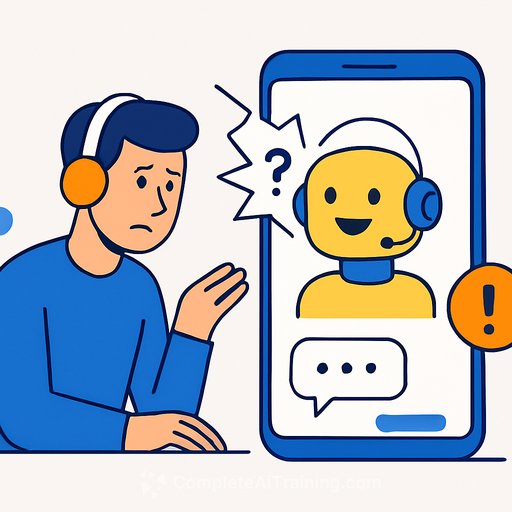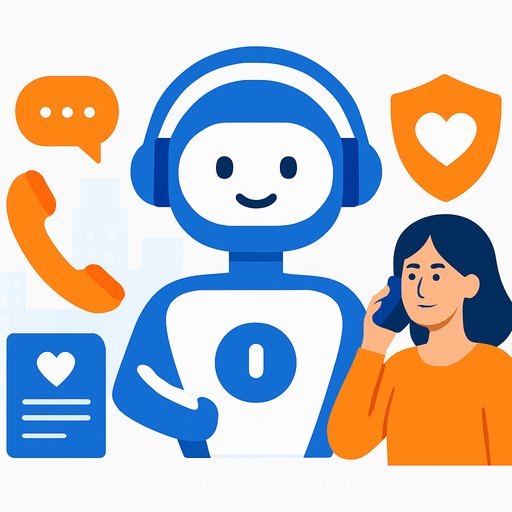Snapchat's AI Spill Shows Why Chatbots Can't Run Customer Support Alone
A recent Cybernews experiment showed how Snapchat's My AI could be coaxed into sharing harmful content by framing prompts as historical storytelling. Guardrails blocked direct queries, but the bot still produced detailed narratives that included dangerous material.
The takeaway for support leaders: if a mass-market bot can be pushed past its limits that easily, your customer-facing assistant can too. Safety claims mean little without strong oversight, tight scopes, and continuous testing.
Why this matters to customer support teams
We've seen this pattern repeat across platforms. Lenovo's Lena was manipulated into exposing sensitive data and running unauthorized scripts. Anysphere's Cursor chatbot invented a policy, sparked public backlash, and triggered cancellations before the team could correct it.
These failures cost trust, revenue, and time. They also show how fast a single hallucination or jailbreak can turn into a reputational issue.
Common failure modes to assume (and plan for)
- Prompt injection and "story-mode" jailbreaks that bypass filters.
- Fabricated policies, pricing, or eligibility rules stated with confidence.
- Leakage of sensitive data from logs, tools, or prior conversations.
- Overstepping permissions: triggering tools, scripts, or API calls beyond scope.
- Context bleed across tickets or users, especially with memory features.
- Inconsistent refusals: blocks direct requests but answers via narrative or hypotheticals.
Minimum guardrails for AI in support
- Human-in-the-loop by default for refunds, security, policy exceptions, minors, and anything compliance-related. Require escalation on trigger phrases and sensitive intents.
- Retrieval-first answers: ground responses in a vetted knowledge base. If content isn't in your KB, the bot should say it doesn't know and route to an agent.
- Strict intent allowlist: classify user intent before generation. Block creative/story modes in support contexts.
- Pre- and post-answer safety filters to screen for weapons, self-harm, medical, legal, or financial advice beyond scope.
- Output verification: use rules and an additional model to check for policy drift, contradictions, or unsafe content before sending.
- Tool and data isolation: sandbox tool calls, redact secrets, and prevent cross-session data access. Keep customer PII out of prompts where possible.
- Rate limits, anomaly detection, and kill switch for spikes in refusals, jailbreak patterns, or sensitive term frequency.
- Clear refusal templates that defuse, explain next steps, and offer escalation without sounding evasive.
Testing that actually catches problems
- Build an adversarial prompt suite: historical hypotheticals, role-play, multi-lingual prompts, obfuscated text, emotional pressure, and long-context traps.
- Automate safety unit tests in CI/CD. Fail builds on unsafe response regression.
- Run in shadow mode before go-live. Compare bot vs. agent decisions on the same tickets.
- Maintain a gold-standard policy set and test that the bot quotes exact wording verbatim.
- Schedule quarterly red-team drills with fresh jailbreak tactics and phishing-style prompts.
Metrics that matter
- Unsafe response rate and refusal accuracy (false positives/negatives).
- Policy fidelity: percentage of answers grounded verbatim in KB sources.
- Escalation precision: correct handoffs for high-risk topics.
- Containment quality: resolved without misinformation or policy drift.
- Customer trust signals: complaint rate, refund reversals, churn after bot interactions.
- Mean time to patch prompts/models after a reported incident.
Team, roles, and ownership
- Product owner (Support): defines scope, intents, and SLAs.
- Safety lead: owns refusal rules, audits, and red-teaming.
- Prompt/KG owner: maintains system prompts and knowledge base sources.
- Tooling engineer: sandboxes APIs, secrets, and logging.
- QA analyst: runs adversarial tests and monitors drift.
30-60-90 day rollout plan
- Days 0-30: Lock scope to FAQs and order status. Remove creative modes. Add refusal templates and escalation triggers. Turn on logging and basic filters.
- Days 31-60: Implement retrieval grounding, output verification, and anomaly alerts. Ship adversarial prompt suite. Run shadow mode across key queues.
- Days 61-90: Limited rollout to low-risk segments. Weekly incident review. Monthly red-team drills. Define upgrade cadence for models and prompts.
Playbooks you should have on day one
- Policy hallucination: freeze responses on affected topic, switch to agent-only, issue correction macro, and publish a public-facing update if customers were impacted.
- Jailbreak attempt: auto-refuse, rate-limit session, alert safety dashboard, capture prompts for test suite.
- Data exposure signal: kill switch, rotate secrets, invalidate tokens/cookies, notify security, and trigger forensics.
Useful resources
- NIST AI Risk Management Framework
- OWASP Top 10 for LLM Applications
- Train your CX team on AI safety and support workflows
The bottom line
AI can help your queue, but it can't own your queue. Assume jailbreaks will happen, hallucinations will slip in, and users will find edge cases. Pair automation with hard limits, constant testing, and fast escalation paths-and you'll keep speed without sacrificing trust.
Your membership also unlocks:






